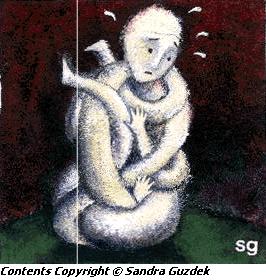The Role of Worry in Ovarian Cancer Screening

Study Synopsis
Background: Cancer is the second leading cause of death among women in the United States, behind only heart disease (American Cancer Society, 2006). Ovarian cancer is the fifth most common cancer among women (not including non-melanoma skin cancers), and is the fourth most common cause of cancer-related death in women. The American Cancer Society estimates that in the year 2006, 20,180 new cases of ovarian cancer will be diagnosed, and 15,310 women will die of the disease. Two non-invasive methods of early-disease detection, transvaginal ultrasound/sonography (TVS) and CA-125 tumor marker sampling, are currently under investigation to determine whether these are efficacious methods of reducing mortality when employed as regularly-scheduled screening procedures.
There is considerable inconsistency in the literature concerning the relationship between worry and cancer screening. Worry has been shown to both promote and inhibit utilization of various types of cancer screening, including screening for ovarian cancer. Additionally, worry has been observed to be both a significant, long term effect and a minor, transient response to participation in ovarian cancer screening. One likely explanation for these discrepant findings is the inconsistent methods used to assess worry in the cancer prevention and control literature. In particular, the two primary methods of assessing worry in this literature—the Breast Cancer Worry Scale (BCWS) and Revised Impact of Events Scale (R-IES)—have never been validated as measures of worry. It can be argued that the poorly established validity of these measures as tools for assessing worry yields results that are often inconsistent, producing a literature that is frequently contradictory and confusing.
Objective: This study aims to contribute to the literature by promoting methodologies for assessing worry that are empirically valid and consistent. The ultimate goal of this research is to promote the utilization of protective health behaviors that are both efficacious and minimally morbid. Because worry has been identified as both a potential barrier to cancer screening, and a consequence of it, developing a better understanding of worry in the context of cancer screening is critical to the implementation of any screening modality that strives to meet these guidelines.
Specific Study Aims: This study has two primary aims: (1) to examine the trajectory of worry over three time points during the cancer screening process, beginning before screening has been conducted and concluding several weeks after results have been provided; and (2) to conduct a construct validity analysis of two commonly used measures of cancer-specific worry in the cancer prevention and control literature.
Study Design: First, this study will assess worry among women who are participating in a screening for ovarian cancer using a unique study design that assesses worry at three time points—before, during, and after screening—using two primary measures of worry. Approximately 220 women will be enrolled in the study. This sample will be gathered from women who are participants in the University of Louisville Ovarian Screening Study—a longitudinal study in which eligible asymptomatic women receive free yearly TVS screening for ovarian cancer. Each of the 220 participants in our study will be telephoned approximately four weeks prior to screening and two to four weeks after receipt of results. Additionally, worry will be assessed on the day these women present for TVS screening, resulting in three time points of assessment overall. No study was found in the literature that has compared pre-screening levels of worry to worry assessed after the receipt of test results among ovarian cancer screening participants, and no study has utilized multiple methods of worry assessment. Comparing the results across both measures can help to test the hypothesis that these two measures assess two different psychological constructs.
Second, this study will conduct a construct validity analysis of these two measures in order to examine their validity as measures of cancer-specific worry. This will be achieved by administering a battery of self-report measures of various psychosocial constructs to the participants and by producing a multitrait-multimethod matrix, in accordance with the methods suggested by Campbell and Fiske (1959).
 Facebook
Facebook Twitter
Twitter Linkedin
Linkedin